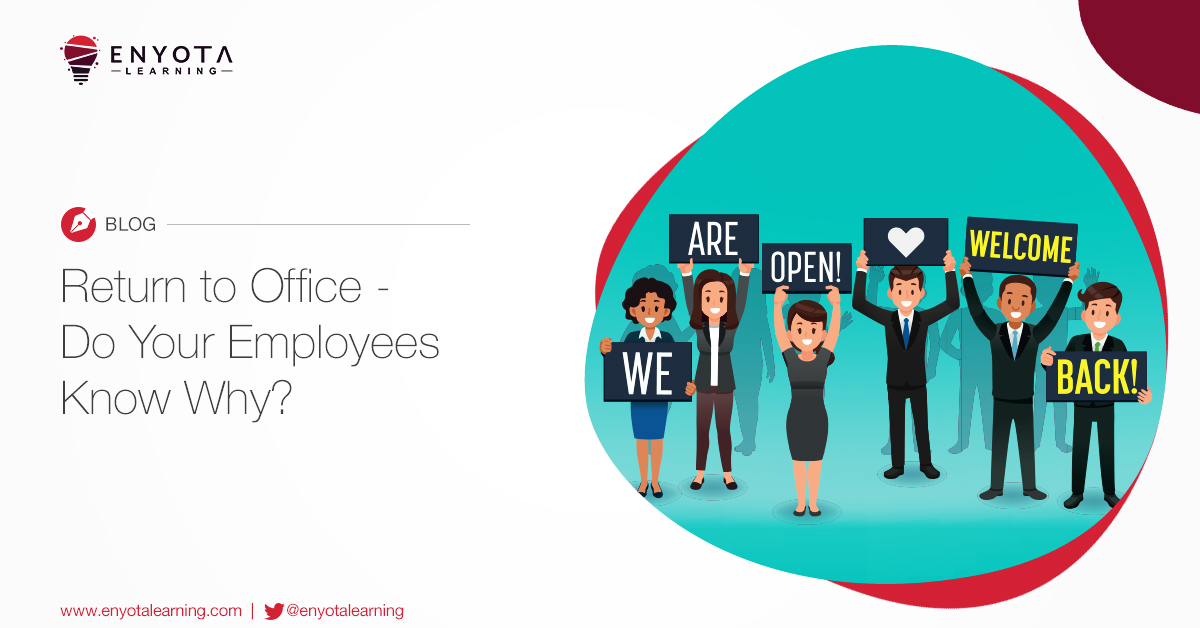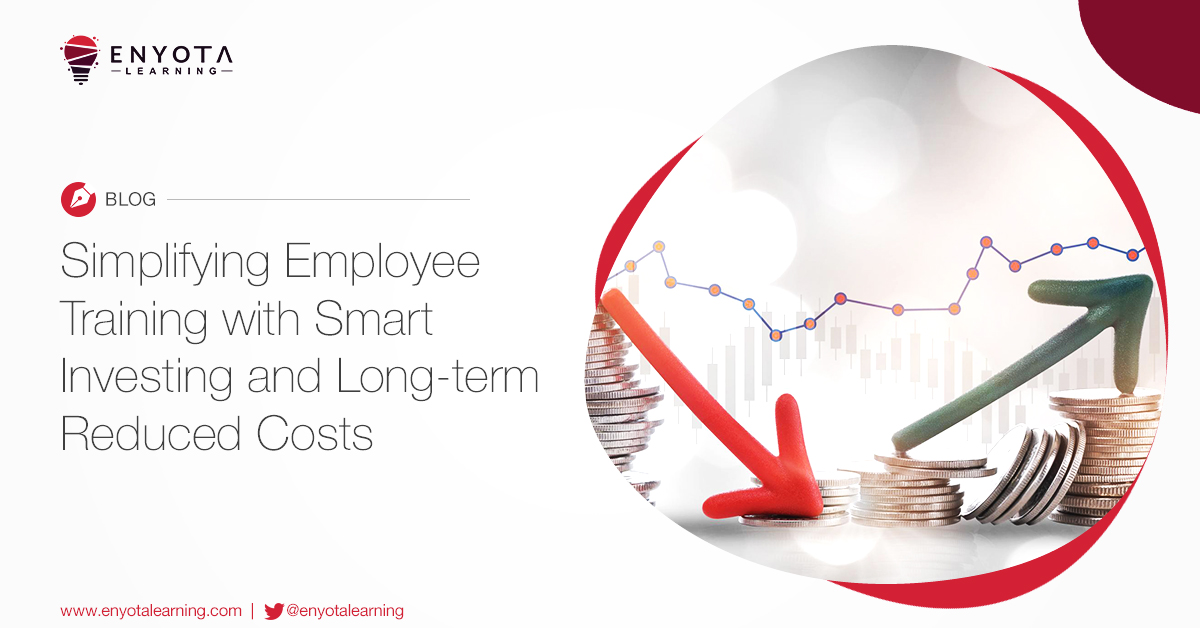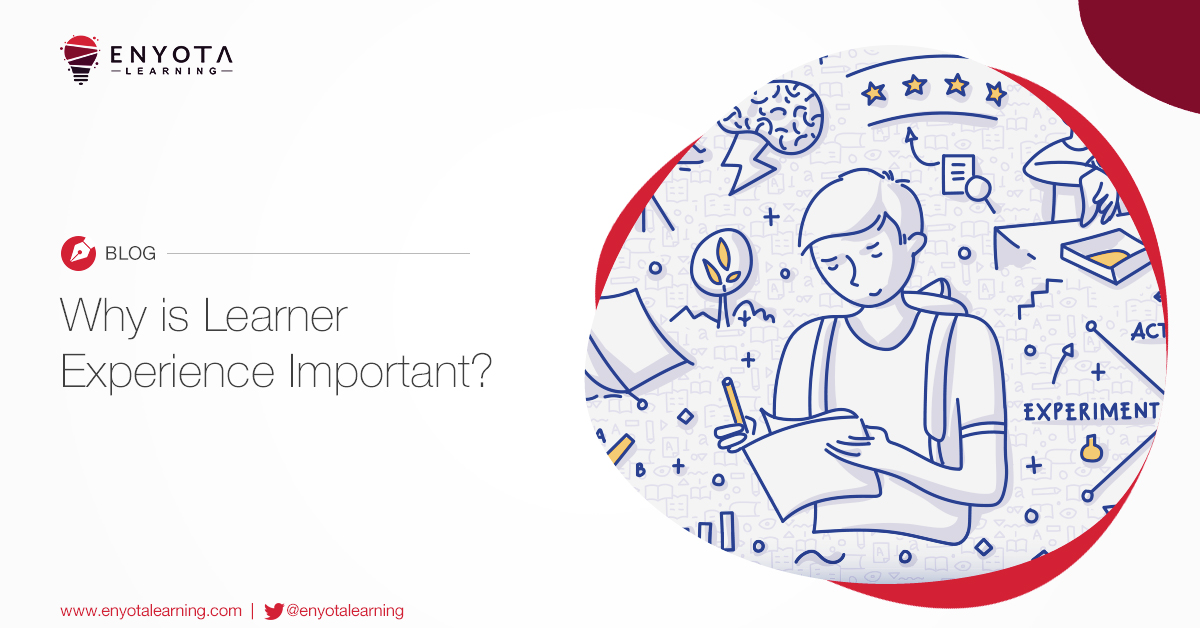eLearning for your employee training initiatives is a great move! But are you fully ready? From defining the objectives of your eLearning program to understanding the types and tools; from deciding on a platform to choosing a content partner; from assimilating and presenting content to offering an intuitive UI – many factors must be considered.
Most organizations can create a simple eLearning course. But ensuring it meets the objective and improves team performance is much harder. Let’s take a look at how to correctly design eLearning for your employees.

5 Points to Remember When Designing eLearning for Your Employees
Goals Mismatch
Many organizations fail to realize the benefits of their eLearning initiative because of a goal mismatch. The first step is setting and communicating clear goals to learners in a manner that is easy to understand and easy to act upon. Have you analyzed your eLearning needs mapped it to the budget and time constraints? Are your eLearning course objectives clear? Do they include segments for evaluation? Are the course requirements consistent with the overall objectives? Does the structure meet instructional goals?
Pro tip
Great eLearning courses follow a thorough needs assessment. The goal of your eLearning program is to impart training when your employees need it, and not when you want to deliver it. Start by identifying the “why” you need to train employees. Don’t make a list of objectives based on what learners should learn or understand. Instead, state what learners should be able to do, on successful completion of the course and then determine how you will them do it. Focus on impact, and if you cannot associate a real action to the course completion, it’s best to redefine your efforts.
Technology Roadblocks
Another hurdle that commonly concerns employees is an outdated technology platform. Today, eLearning must be easy to use and navigate. Functionality, takes top priority. If you do not offer an accessible and intuitive eLearning platform, you will find learners getting frustrated and demotivated. Not the best recipe to help them focus on the coursework!
Pro tip
Leveraging eLearning requires some technical finesse. It is important to invest in the right technology. Consider hiring an eLearning partner who can help define the strategy for you. Make sure to integrate your eLearning program with a functional Learning Management System (LMS) and your HR Management System (HRMS) and other enterprise systems. Also, make the course available on mobiles in microformat videos. This ensures a more engaging learning experience and greater personalization that improves adoption and effectiveness.
Content Assimilation and Distribution
A time-consuming aspects of any eLearning activity is content assimilation and distribution. Take a decision about converting your physical training material into eLearning or starting afresh. One thing is certain—you will need to think long and hard before bringing together content for your eLearning and presenting it in a concise and relevant manner.
Pro tip
Since today’s digital learners expect easy-to-understand content, offer an optimal learning experience that focuses their attention only on what’s important. Make sure to organize content in easy-to-consume and retrieve formats and enable the natural flow for learning that prevents cognitive overload. Everything in the course should be designed with intent. Your course should allow the learner to focus exclusively on the content rather than trying to figure out how something works or where they should click.
Poor Adoption
Not every learner learns at the same pace; or through the same content or format or the same device. Some learners may benefit from visual multimedia presentations while others may absorb text information better. Learning styles vary across age groups, departments, demographics, and regions. Organizations that do not factor this in often find themselves failing at eLearning.
Pro tip
A fundamental aspect of effective eLearning design is creating engaging content that suits the needs of learners of all types. As a result, analyze your target audience, and carefully understand their needs, background, breadth of experience, tech skills, competency level, motivation, and interests. The more you know about them, the more you can customize their program and improve the outcomes. Offer a responsive design that maximizes effectiveness across mobile phones, tablets, laptops, and personal computers as accessibility ensures better retention and understanding of the material.
Negative Feedback
Despite all the efforts you take to drive the positive outcome of your eLearning initiative, chances are you will still receive negative feedback. From poor content presentation to a non-responsive UI; hard-to-find course content to unclear objectives; poor navigation to unattainable deadlines. Such feedback can come directly from the users or mined from data analytics. Organizations that don’t implement the suggestions and recommendations into the following eLearning programs are sure to fail.
Pro tip
Every member of your extended eLearning design and development team should know what is expected of them, and how they should address the course feedback. They should be aware of the deadlines and should have a detailed understanding of what each needs to do. This is to ensure the changes are made on time. It is only when you continuously review every aspect of the course, look at feedback positively, and make necessary changes that you can improve adoption and effectiveness.

Factors That Contribute to the Development of eLearning for Employee Training
First off, good custom eLearning for employee training is important and there are no two ways about it. Your business relies on unique processes which contribute to your success. And just like that, your business needs training that is unique and contributes to its success.
So, what apprehension surrounds custom eLearning development? Why do some organizations still hesitate to design training courses that are custom-built to match their exact training needs?
let’s dive in.
Budgets
To develop custom eLearning courses is the best possible solution to your organization’s employee training needs. If you try comparing the price of readymade eLearning courses to that of custom eLearning courses, and then make a decision on the basis of price alone, you are making a gross miscalculation.
Readymade courses are undoubtedly more affordable when compared to custom eLearning, but you cannot expect such training to make any real difference to the overall productivity and output of your employees. Why? Because readymade courses are an attempt at giving life to the saying ‘one size fits all’. However, as experience and the practical application tells us, it cannot get any further from the truth.
Businesses cannot rely on the ‘one size fits all’ mindset with regard to training. Especially if the training revolves around complex topics that are critical to your organization’s success. Instead, you’ll have to keep aside reasonable budgets to develop custom eLearning courses that cover all there is to know about excelling within your organization. And that is what most employees need.
Time
Generally, we always relate custom eLearning development with long development cycles. The truth is that there are two sides to this coin.
With advanced designing technology and a global shift towards applications that use readymade templates and objects to create media-based eLearning courses and videos, long development cycles can be shortened. In some cases, development can be shortened to less than a week! Here is an example of how we create simple animated explainer eLearning videos in less than a week!
And, as we first hinted that there are two sides to this coin, it is true that such rapid eLearning development cycles are best suited for rapid training needs and simpler topics.
For complex topics, it is still important to focus on well-designed, engaging, and immersive eLearning courses. Something which takes time to build, but yield more wholesome results.
So, if time is something that your organization does not have, rapid eLearning development and custom eLearning development can work well with each other. However, if you are looking for something with increased depth and engagement, then consider standard eLearning development.
Content
Content forms the backbone of your custom eLearning course. And unfortunately, no matter how much you want it, nobody can assist you with content but yourself. You know your organization’s needs, you know what it takes to function, and so you put together content that is critical for your training to succeed.
Now we know that putting together content for your training needs can be very complex for some people. And honestly, there is not much that one can do but get on it like hammering nails into the wall – head-on.
However, there is one solution that may simplify it a little if not completely. We are talking about identifying internal subject matters experts (SMEs) who can assist you with putting together the content. Subject matter experts are employees who excel in their domain. These are employees who display clear indications of having overcome hurdles with regard to their job role. Such employees are excellent examples for others to follow and they are very good sources from which to generate high-quality custom training content.
Designs
Unlike readymade courses, custom eLearning allows you to choose the designs that come with the training course. Designs are very important. Ill-designed eLearning course fail. Your employees won’t want to access these, neither will it make a difference once accessed because it distracts instead of engages.
Design is something that not everybody can get right. Alongside understanding the principles of design, i.e.: what colors go well together, what metaphors resonate, what activities will engage the learners, etc., one must also consider the psychological implications of design on a learner’s ability to interact with a course, i.e.: where should navigation be placed, how should the text and media appear on the screen and in what sort of a layout (like placing text on the upper left corner catches the attention of most readers immediately).
Also, when we talk about custom eLearning development, it is the design that you really pay for. Now, whether your content follows simple video-based development or complex animations and simulations, it all comes down to instructional and visual design and how you use it to enhance the effectiveness of your course.
Choosing the Right Partner to Design and Build Your eLearning for Employee Training
Finally, choosing the right development partner or more importantly, an eLearning vendor is very important. But eLearning vendor sounds very unidirectional. Whereas developing custom eLearning courses are anything but that. As a result, we call it choosing a development partner because it is a partnership that involves a lot of back and forth between the organization and the development partner.
Reviewing development at all major intervals and proving important feedback to your eLearning development partners is the key to a short development cycle with the least possible hassles.
You may also want to consider partnering with an experienced eLearning vendor. Someone who can support your organization throughout the development tenure with their expertise.
Stay at the Forefront
In a digitally-inclined world, eLearning presents a wonderful opportunity. The flexibility and ease of imparting knowledge and skills to an audience you could never reach in a classroom is what makes it truly worthwhile. If you’re looking to add eLearning to your training, clearly state your objectives, use the right technology platform (and/or partner), assimilate and distribute the right content, take into consideration multiple learning styles, and implement feedback in a way that only improves the effectiveness of the program. A little effort, and you’ll find yourself at the forefront of an eLearning revolution. Are you ready?
Contact us at contact@enyotalearning.com or click on this form to know more. Also, test our Learning Management System – Abara LMS.






